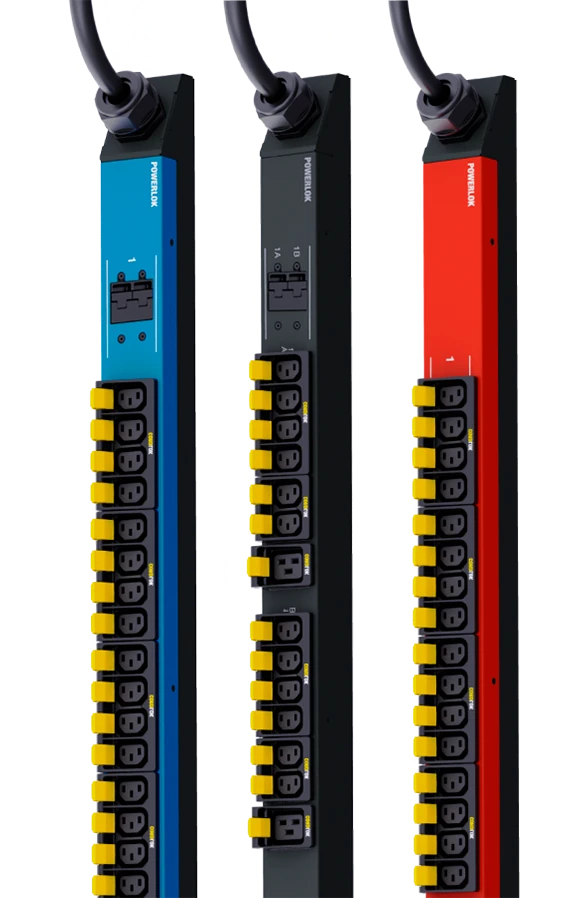Data Center Trends: Rack Density Rises While PUE and Outage Frequency Remain Flat18 min read

The Uptime Institute’s Global Data Center Survey in 2024 highlighted several key trends. Average server rack densities are on the rise but remain below 8 kW. Meanwhile, average Power Usage Effectiveness (PUE) levels have remained largely consistent, showing little variation. Additionally, the frequency and severity of data center outages have seen minimal change. In today’s blog, we explore each of these trends in more detail.
Server Density Averages Remain Fixed
Clearly, there is a gulf opening in the data center market between the innovators and the traditionalists. The hyperscalers, tech giants, and large colocation providers operate on the bleeding edge. They figure out how to deploy new approaches to bring efficiency – and costs – down. It is within their operations that we see a surge in overall server density.
However, this does not translate into a big leap in average data center rack densities. Reason being, about half of all data centers are more than 11 years old. They either lack the funds to implement the latest technologies or are mired down by an aging infrastructure that makes the transition to densely packed racks difficult or even impossible.
Uptime Institute discovered that a third of operators are developing new capacity to handle high-density cabinets. This number is expected to increase in 2025. Despite that, average server rack densities are rising at a slow rate. The industry average is gradually sneaking upwards from around 5 kW but is not quite at 8 kW. Relatively few facilities possess racks above 30 kW. Dense racks, then, are largely the province of hyperscalers and those serving high-value AI markets. Where there is a strong business case for densification and a proven market demand, that’s where you find the denser racks. The bulk of data centers, though, are struggling to serve highly dense AI and HPC demand.
Flat PUE
Power Usage Effectiveness (PUE) is probably the most used data center metric around. It estimates the operational efficiency of a facility based on total facility power divided by the power consumption of IT equipment. Following its introduction in the middle of the 2000’s, PUE dramatically improved. Starting at 2.5 when the Uptime Institute first calculated an average across data centers, it plummeted to 1.98 by 2011, 1.65 by 2014 and 1.58 by 2018. Since then, though, improvements have been minimal. 2019 saw the rate rise to 1.67. During the 2020s, PUE has hovered between 1.59 and 1.55. In 2024, it was 1.56.
“Average PUE levels remain mostly flat for the fifth consecutive year, but this obscures the advances in newer, larger facilities,” said Andy Lawrence, Executive Director of Research, Uptime Institute.
The advent of the highly dense IT systems needed for generative AI and other high-performance applications has placed new demands on data centers. Those with the deepest pockets and the biggest market slices are responding by implementing technologies such as liquid cooling and the latest GPUs. Thus, a few operators are leading the way in PUE while most operators lag. Only a small slice of the market is seeing PUE decline steadily. The rest are either waiting to see how they do or are hoping for more affordable ways to implement these technologies.
“As innovative IT and facility designs continue to grow in number, their influence on industry-wide averages will likely be apparent in a few years,” said Lawrence.
PUE, though, is far from a perfect metric. Things like climate, facility operating priorities, water availability, and financial capabilities can influence it significantly. Further, those with older IT systems may suffer in terms of PUE as the energy performance of equipment tends to improve over time.
These differences are likely to accentuate in the next couple of years. Those with the ability to implement liquid cooling and that can order GPUs and supporting equipment they need will boldly push their PUE numbers where no data center had dared to go before. For the rest? NVIDIA has told the market that it will be a year before they can provide their latest chips to anyone except hyperscalers. Thus, the disparities will persist. Industry PUE averages will be diluted while the rest of the industry plays catchup.
Instead of waiting, traditional data centers can still make progress. How? The biggest improvements to PUE to date have come, not from revolutionary changes in technology, but from proper execution of the basics and by data centers grabbing the low hanging fruit.
“Examples include the use of blanking panels, containment systems and variable frequency drives, as well as some relaxing of temperature set points,” said Lawrence.
Proper channeling of hot and cold air via containment, blanking panels, floor tiles, and grommets are a key aspect of data center efficiency. When implemented in parallel with advances in processor efficiency/power and liquid cooling, they can bring PUE down even further.
“Many recent builds consistently achieve a PUE of 1.3 — and sometimes much better,” said Lawrence. “With new data center construction activity at an all-time high to meet capacity demand, Uptime Intelligence expects these more efficient facilities to lower the average PUE in the coming years as their proportion in the survey sample grows.”
Outages Lessen
The good news is that all of this is adding up to fewer data center outages. Although the long-term trend looks relatively flat, Uptime Institute surveys show gradual improvement in resiliency and fewer outages. Contributing factors include better management, improved processes, better maintained and monitored equipment, and more investment in facility resiliency and redundancy.
Setting the standard for rack power reliability.

PowerLok® eliminates all mechanical connections, making it 270%
less likely to fail than rack PDUs with mechanical terminations.
Setting the standard for rack power reliability.
With automated soldering from line input to each receptacle,
PowerLok® eliminates all mechanical connections, making it 270%
less likely to fail than rack PDUs with mechanical terminations.

Drew Robb
Writing and Editing Consultant and Contractor
0 Comments